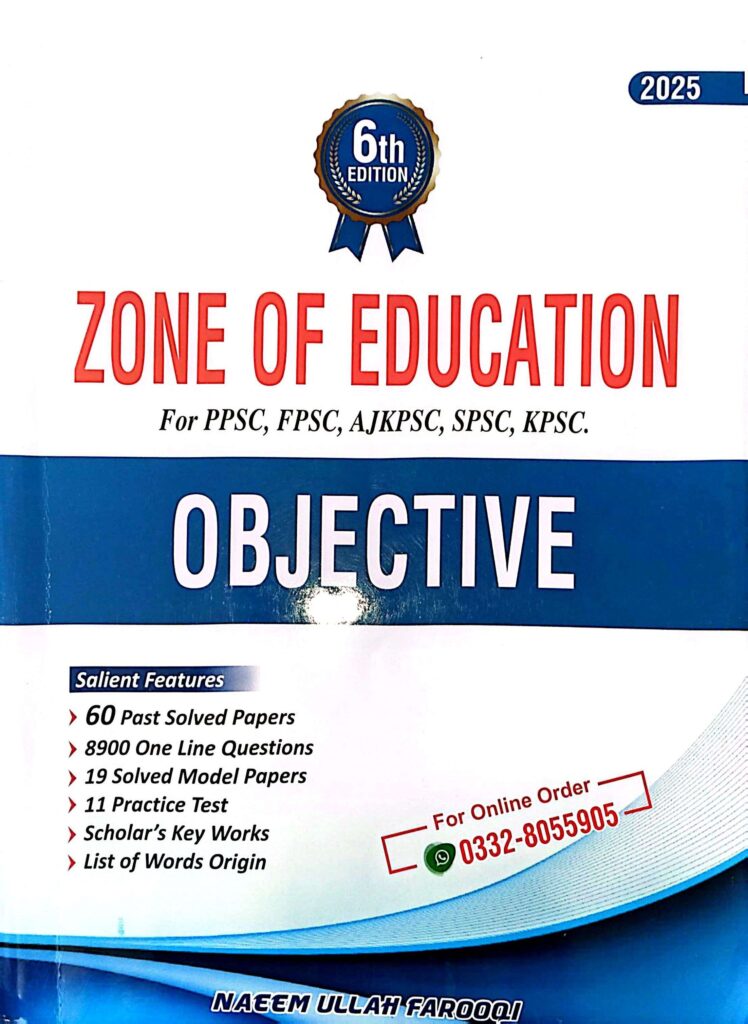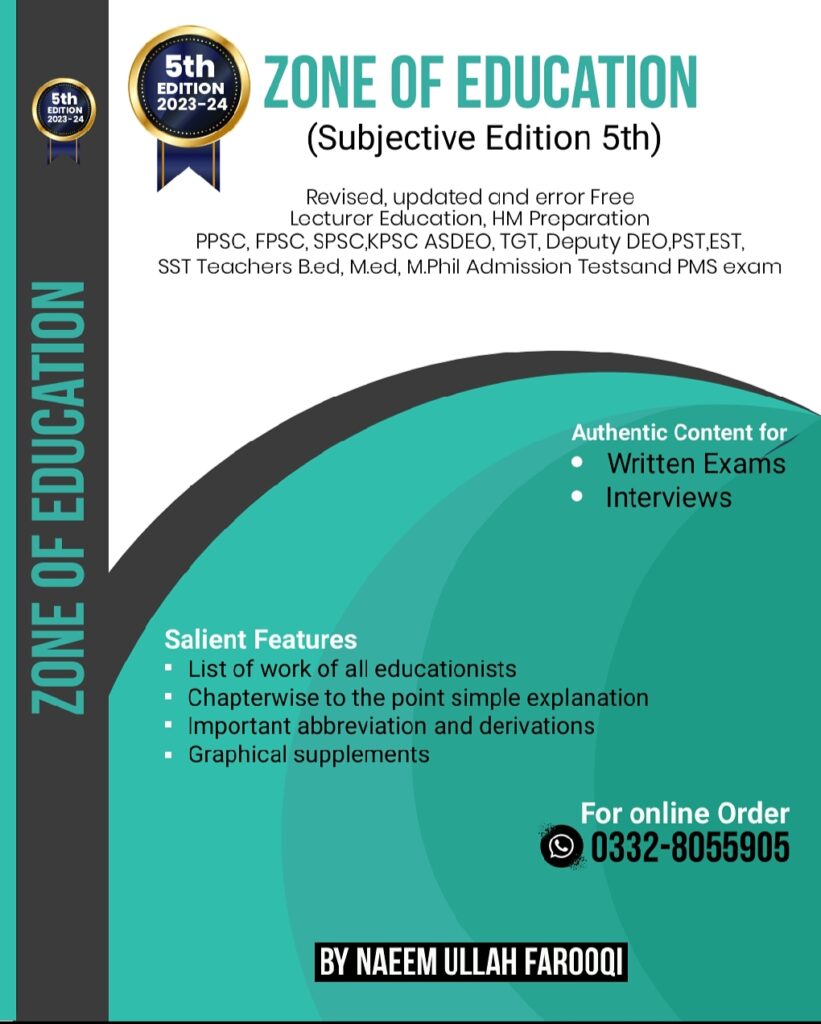Adminitration and Management in Education
151. The written step-by-step directions to develop a lesson plan is an example of:
A. Standardization of output
B. Standardization of work
C. Standardization of skills
D. None
Ans: B. Standardization of work
152. Attained by specifying the result of the work; the fundamental dimensions of the product or performance are enumerated by:
A. Standardization of output
B. Standardization of work
C. Standardization of skills
D. None
Ans: A. Standardization of output
153. The operating core is the key part and standardization of skills is the central coordinating device in:
A. Professional Bureaucracy
B. Machine Bureaucracy
C. Divisionalized form
D. Adhocracy
Ans: A. Professional Bureaucracy
154. Standardization of work is a prime coordinating mechanism and the techno-structure is the key part of:
A. Professional Bureaucracy
B. Machine Bureaucracy
C. Divisionalized form
D. Adhocracy
Ans: B. Machine Bureaucracy
155. A highly centralized and highly bureaucratic but relatively flat administrative structure is known as:
A. Professional Bureaucracy
B. Machine Bureaucracy
C. Simple Bureaucracy
D. Adhocracy
Ans: C. Simple Bureaucracy
156. Standardization in this kind of structure is unnecessary because things are worked out as they arise:
A. Simple
B. Machine
C. Complex
D. None
Ans: A. Simple
157. The need/satisfaction questionnaire (NSQ) was developed by:
A. Herzberg
B. Maslow
C. Lyman Porter
D. Alderfer
Ans: C. Lyman Porter
158. Goals motivate people to develop strategies that will enable them to perform at the:
A. Required goal levels
B. Important goal levels
C. Satisfaction goal levels
D. Strategic goal levels
Ans: A. Required goal levels
159. Frederick Herzberg developed a unique and exciting motivation theory that is known as:
A. Motivation Hygiene theory
B. Two-factor theory
C. Hygiene theory
D. All of these
Ans: D. All of these
160. Expectancy theory is based on how many assumptions?
A. Four
B. Three
C. Five
D. Six
Ans: B. Three
161. __ provides one of the most comprehensive descriptions of the open system perspective.
A. Daniel Katz and Robert Kahn
B. Chris Argyris and Eric Berne
C. Andrew Halpin and Don Croft
D. James Henderson and Wayne Hoy
Ans: A. Daniel Katz and Robert Kahn
162. All of these are pressures for organizational change except:
A. Government interventions in schools
B. Society’s values
C. Processes and people
D. Organizational structure
Ans: D. Organizational structure
163. Which one of the following is NOT a cause of resistance to change?
A. Threats to power and influence
B. Limited resources
C. Society’s values
D. Knowledge and skill obsolescence
Ans: C. Society’s values
164. The concept of Force Field analysis was developed by:
A. Robert Kahn
B. Kurt Lewin
C. Chris Argyris
D. Eric Berne
Ans: B. Kurt Lewin
165. Reducing the forces acting to keep organizational change is:
A. Unfreezing
B. Moving
C. Freezing
D. None
Ans: A. Unfreezing
166. The degree to which a job requires completion of a whole and identifiable piece of work comes under:
A. Skill variety
B. Task identity
C. Task significance
D. Autonomy
Ans: B. Task identity
167. Laboratory training group consists of members:
A. 5-10
B. 10-15
C. 15-20
D. 20-25
Ans: B. 10-15
168. Span of control for any manager/administrator is:
A. 5-10
B. 10-15
C. 15-20
D. 20-25
Ans: A. 5-10
169. Which one is NOT the type of the “Laboratory training group”:
A. Brother
B. Sister
C. Cousin
D. Family
Ans: B. Sister
170. __ is an individual approach to change:
A. Strategic planning
B. Role analysis technique
C. Job enrichment
D. None of these
Ans: C. Job enrichment
171. The S-O-B-C model, which provides a useful way of viewing the behavior modification process, was developed by:
A. Chris Argyris
B. Eric Berne
C. Fred Luthans
D. B.F. Skinner
Ans: C. Fred Luthans
172. The state that reflects maturity, objectivity, problem-solving, logic, and rationality is:
A. Parent ego
B. Adult maturity
C. Adult ego
D. Teenage ego
Ans: C. Adult ego
173. The two early researchers, Andrew Halpin and Don Croft, are recognized as determining the significance of __ in organizational behavior.
A. Authenticity
B. Production
C. Resistance
D. Power
Ans: A. Authenticity
174. All are group approaches to change except:
A. Behavior modification
B. Intergroup problem solving
C. Survey feedback
D. Strategic planning
Ans: A. Behavior modification
175. Structural differences between strategic planning and long-range planning were outlined by:
A. Shirley McCune
B. Andrew Halpin
C. Don Croft
D. James Henderson
Ans: A. Shirley McCune
176. Organizational culture has its roots in sociology and anthropology, whereas organizational climate is rooted in:
A. Sociology
B. Epistemology
C. Physiology
D. Psychology
Ans: D. Psychology
177. A self-cleaning statue ready to offer up a sacrifice if it will maintain its position is:
A. Educator
B. Principal
C. Leader
D. Manager
Ans: B. Principal
178. OCAT stands for:
A. Organizational Culture Assessment Installment
B. Organizational Culture Assessment Inventory
C. Organizational Culture Assessment Instrument
D. Organizational Culture Assessment Inaccessibility
Ans: B. Organizational Culture Assessment Inventory
179. Theory Z was developed by:
A. McGregor
B. William Ouchi
C. Robert G. Owens
D. None
Ans: B. William Ouchi
180. Importance of organizational culture—that is, norms, values, and feelings of employees and institutes—comes under:
A. Theory X
B. Theory Y
C. Theory Z
D. Theory Y and Z
Ans: C. Theory
JOIN ZONE OF EDUCATIONPK!
Discover the most comprehensive and reliable pedagogy resources in Pakistan, curated for competitive exam success. Our content covers all competitive exam MCQs, including PPSC, FPSC, AJKPSC, SPSC, and more. Designed to empower learners with top-notch material and insights, trust us for your preparation journey!


